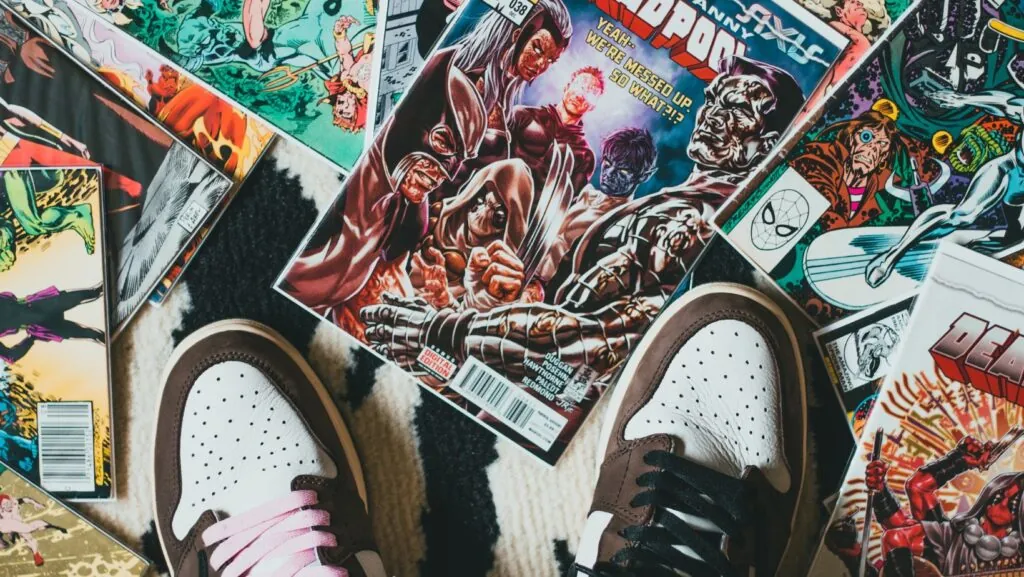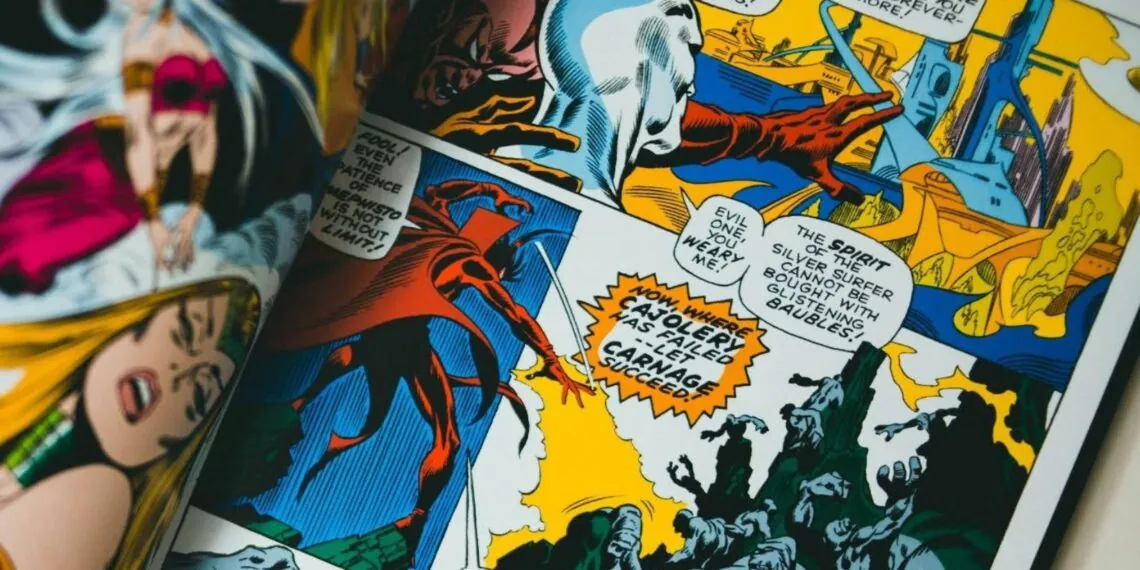Comics used to be kid stuff. Now, they’re cultural powerhouses that shape how we see ourselves as Americans. These colorful pages have gone from basement collections to billion-dollar movie franchises, and honestly, it’s been quite the ride.
Let’s dive into how comics transformed from “those things parents worried about” into legitimate cultural commentary that influences everything we watch, read, and think about.
Where It All Started
Comic strips showed up in the late 1800s, but things got interesting in the 1930s and 40s. Superman burst onto the scene in 1938, and suddenly kids (and plenty of adults) had someone who could literally leap tall buildings. Batman followed, bringing that dark, brooding energy that still dominates our screens today.
These weren’t just escapist fantasies. During World War II, Captain America was literally punching Hitler on comic covers before America even entered the war. Talk about cultural commentary. These characters became symbols of hope when people desperately needed them. They reflected what Americans wanted to be: strong, moral, unbeatable.
Comics as Social Mirror
The real game-changer came with titles like “X-Men” in the 1960s. Stan Lee and his team weren’t just creating mutants—they were tackling racism head-on during the Civil Rights era. Professor Xavier and Magneto represented different approaches to achieving equality, mirroring the philosophical differences between Martin Luther King Jr. and Malcolm X.
Comics started asking uncomfortable questions. What if the people you feared were just different, not dangerous? What if the real monsters wore suits and ties? These stories made readers think, and that’s powerful stuff.
Today’s comics continue this tradition. We’ve got Muslim superheroes, LGBTQ+ characters front and center, and storylines that don’t shy away from police brutality or immigration issues. Comics aren’t playing it safe anymore.
Changing How We Tell Stories
Modern TV owes a huge debt to comics. That serialized storytelling we love in shows like “Breaking Bad” or “Stranger Things” is a format perfected by comics decades ago.
“The Walking Dead” started as a comic before it became a TV phenomenon. The Marvel Cinematic Universe is basically a 20-movie comic book run brought to life. These adaptations work because comics already figured out how to balance multiple characters, interconnected storylines, and satisfying character arcs across years of content.
Even the way we consume media now—binge-watching, waiting for the next episode, theorizing about what happens next—that’s the comic book experience translated to streaming platforms.
The Money Side of Things
Let’s talk numbers for a second. San Diego Comic-Con brings in over 130,000 people annually, and they’re not just buying $5 comics. We’re talking serious merchandise, exclusive collectibles, and experiences that cost hundreds of dollars.
The comics industry itself might seem small compared to Hollywood, but its cultural influence generates billions. Every Marvel movie, every Batman video game, every superhero Halloween costume—that’s comic book DNA making money.
Going Digital
Comics have embraced the digital age in ways that honestly surprised everyone. Platforms like Webtoon have democratized comic creation—now anyone with a tablet and a story can potentially reach millions of readers.
This digital shift reminds me of how traditional games have adapted online. Just like American online poker moved from casino tables to digital platforms and found new audiences, comics discovered that going digital didn’t kill the medium—it expanded it. New creators who couldn’t break into traditional publishing now have direct access to readers.

Digital platforms also allow for different storytelling techniques. Infinite canvas, animated panels, interactive elements—we’re seeing comics evolve in real-time.
What This All Means
Comics aren’t just entertainment anymore, and maybe they never really were. They’re cultural documents, economic engines, and artistic laboratories all rolled into one.
They’ve influenced how we tell stories, how we think about heroes and villains, and how we process complex social issues. From newspaper strips to Netflix series, comics have left their mark on virtually every form of American media.
As we move forward, comics will keep evolving. New voices will challenge old assumptions, new technologies will create new possibilities, and new stories will reflect whatever America becomes next.
The kid reading comics today might be tomorrow’s filmmaker, game designer, or social activist. And they’ll carry these stories with them, adding to the ongoing conversation about who we are and who we want to be. That’s the real power of comics—they don’t just reflect culture, they help create it.







